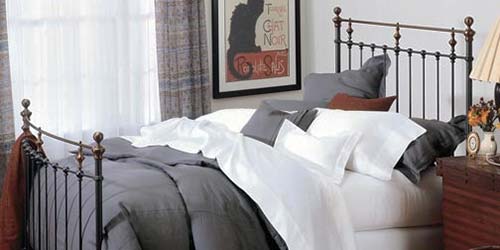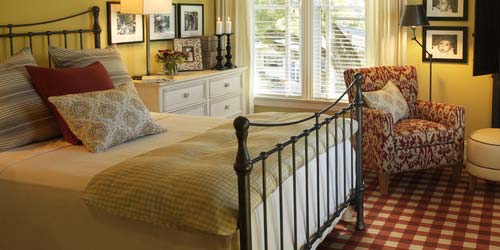Buying a new bed is often much harder than it seems. This is because there are plenty of factors to consider. The size of the room, the decorative style or theme, your budget, and so on. All these things determine what type of wrought iron beds you choose.

The one thing which seldom crosses people’s minds is the material of the bed frame. This is because – for most people – it is often a foregone conclusion. Their choice is wood. What matters is the type of wood (i.e. pine, mahogany, etc.) or style of wood (i.e. plain, upholstered, vanished, decorated, etc.).
Even when people think of other non-wood materials, they always think of stainless steel, laminates, and veneers. Laminates and veneers are types of artificially constructed wood-based materials. The one material which people seldom think about is wrought iron. The idea of having wrought iron beds almost never crosses people’s minds.
This is quite surprising because these bed frame designs have lots of positives. However, we shall not list those positives. We shall do something better: we shall pit wrought iron against the most popular material (i.e wood) and see how it stacks up.

Wrought Iron Beds from Cathouse Beds
Wrought iron is a type of iron which is strong and malleable (flexible). It is one of the types of iron obtained from smelting. The other is cast iron. Wrought iron has extremely low levels of carbon (usually around 0.08 percent). This makes it less brittle than cast iron. As such, wrought iron can be worked into various shapes without breaking. The history of iron beds is very interesting. In fact, before the invention of stainless steel, wrought iron was used for making swords, cutlery, axes, chisels, and other sharp-edged tools. Also, in the 1860s wrought iron was used for making warships and railways.
The very name “wrought iron” comes from an archaic past-tense of worked. “Wrought iron” essentially means “worked iron”. It was called so because of its flexibility when meant that it could be worked into various shapes for wrought iron beds. Measuring two kinds of materials can get tricky. So let us focus on four factors which people typically consider when purchasing beds i.e. strength and durability, style and design, and ease of repair. This will enable us to determine which how wood and wrought iron stack up against each other.
There is no doubt that some kinds of wood used to make beds (specifically the hardwoods) are strong and durable. No one can doubt the strength of mahogany and oak. However, none of those get even close to the strength of wrought iron beds. This is a material which was used to build warships back in the day. The famous Eiffel Tower is constructed from a type of wrought iron.
Basically, when it comes to strength and durability, wrought iron beds will outlast wooden beds any day. The best part about wrought iron is that it does not corrode. This basically means that the bed will not deteriorate with time (unlike some woods which can be destroyed by certain types of insects).

Top-Quality Wrought Iron Beds
The sheer variety of wood types available is staggering. The kinds of wood typically used for making beds are mahogany, oak, beech, pine, and maple. Each of these has its own textures, color, grain styles, and patterns. Some types of wood like oak are excellent for curving. Basically, wood can be designed in multitudes of styles. Basically, whatever the decorative style of your room, you can find the right design to match it.
What wrought iron doesn’t have in variety, it makes for in malleability. The sheer flexibility of wrought iron means that it can take on any curved wood. Delicate, ornamental designs can be achieved with wrought iron beds which are impossible to achieve with wood. As a matter of fact, wrought iron – when twisted can create grain-like patterns similar to wood. This means that it can be made to look like wood.
So, who wins in terms of design and style? Let’s call it a tie. Whatever your design and stylistic preferences, you can find the perfect wooden bed. But you can also as easily find the perfect wrought iron beds. Therefore, none has a clear edge over the other.
Everything eventually breaks down. Beds are no exception. When they do, you need to get them fixed. Both wooden and wrought iron beds are quite easy to repair. This is because the iron bed frame tops are usually easily available. However, wood tends to be more costly to repair. This is because any part which breaks will often need to be replaced. For wrought iron, it is a matter of welding any broken part and the bed is as good as new.
Head-to-head, wrought iron beds beat wooden ones hands down. They have greater strength/durability and are easier to repair. They can also match wooden beds in terms of style and design. Therefore, unless you have a strong reason to purchase a wooden bed frame, you may as well purchase a wrought iron bed. It will serve you as well as the wooden bed – if not even better!
